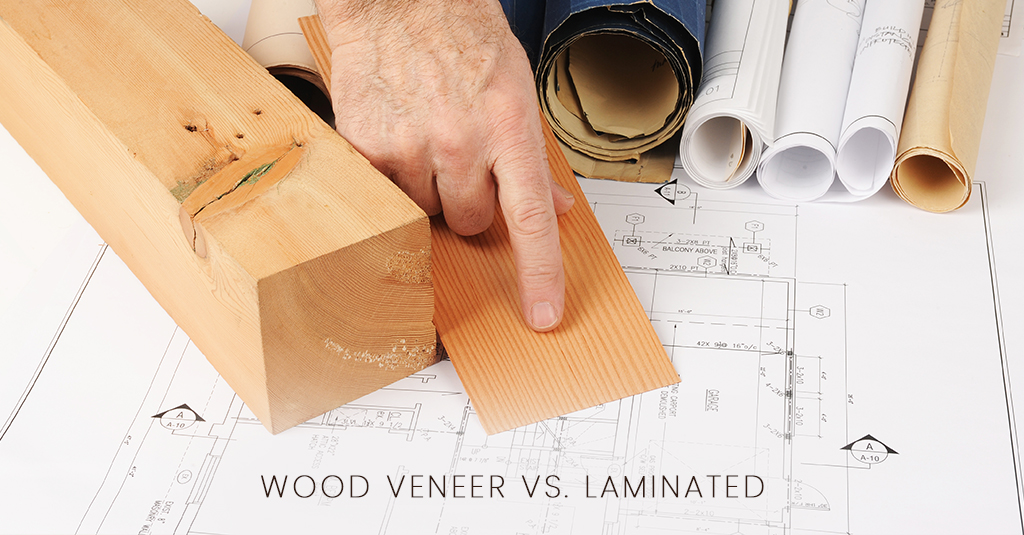
What is the difference between laminate and veneer wallcoverings? Both are popular options, offering versatility and aesthetic results. However, they are vastly different materials with varying pros and cons. Choosing the right one for your space means understanding each product and determining the one that will best meet your needs.
What is Laminate?
Laminate is designed to mimic the look of real wood. To make this durable man-made material, a heavy-duty paper is first pressed together with melamine to create a hardened resin. A decorative layer is applied to the solid resin. While laminate is often printed with a wood design, it is incredibly versatile and can be printed with any type of color, pattern, or design. Once a clear protective coat is applied, you can use the laminate just like you would use wood.
Pros
Durable and easy to clean, laminate resists stains, scratches, and heat damage, and it tends to be quite affordable. Some are even designed with antibacterial clear coatings, making them particularly appealing in certain high-risk or high-traffic environments. The printed designs can match almost any environment for a wide range of on-trend looks.
Cons
While modern printing techniques have advanced a long way since the laminates of the 1970s, they still lack the natural variations of real wood veneer. Laminate is also not as strong or durable as real wood, and it cannot be sanded, stained, or easily altered.
What is Wood Veneer?
Veneering is an art form that dates back to ancient Egypt. Wood veneer is made using real wood that is sliced incredibly thin and adhered to a backing. A clear polyurethane coat is applied for protection and shine. The veneer is used not just for wall coverings but furniture, cabinets, doors, and even certain types of flooring. Less expensive than solid wood, veneer is also less prone to warping and cracking thanks to its design. No veneer definition would be complete without the reminder that it is a sturdy, beautiful, and eco-friendly material. It is ideal for virtually any surface from a reception desk or statement wall to a ceiling or entire room.
Pros
Because it is made using real wood, veneer preserves the natural beauty and feel of the wood’s grain. It is strong and durable, and there is no need for complicated maintenance routines. Simple dusting and occasional cleaning are all that is needed to keep your veneer definition clean and sharp and looking lustrous. The way we cut the wood can allow for incredibly intricate designs and patterns. However, at Jacaranda, we also have special techniques for staining and printing wood veneer to match any design scheme.
Cons
There are few cons to using veneer. It does cost more than laminate, but it lasts longer, making it a more cost-effective option.
About Jacaranda Inc.
At Jacaranda, veneer is our passion. We have studied and perfected the art of veneer wall coverings, developing and designing new methods to maximize the yield of each log and perfect the look of the products we create. Call us today to learn more about what is wood veneer or to schedule an appointment with one of our design specialists.


